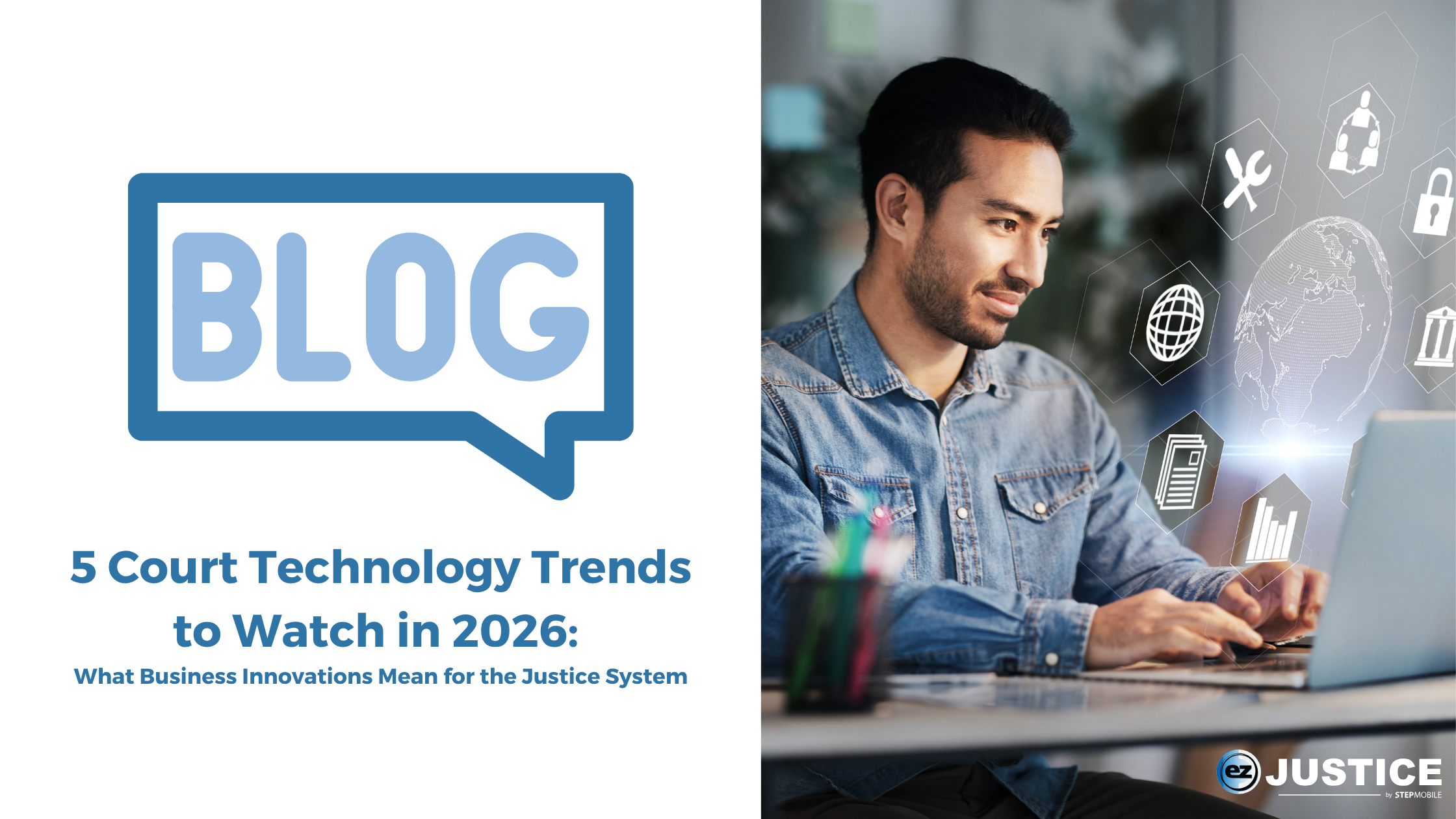2 min read
5 Court Technology Trends to Watch in 2026: What Business Innovations Mean for the Justice System
Lauren Hogsette
:
Nov 14, 2025 3:14:36 PM

Technology is evolving at record speed across every industry—and the court system is no exception. As business leaders embrace automation, AI, and cloud-first operations, these same advancements are beginning to reshape how courts manage workloads, support staff, and serve their communities. Below are five real technology trends emerging in the business world that are especially relevant to courts heading into 2026.
1. Practical AI Becomes Standard—Not Experimental
Across industries, AI adoption is shifting from “innovation” to “infrastructure.”
Businesses are now using AI for:
-
Drafting documents
-
Predicting workloads
-
Automating customer communications
-
Analyzing large datasets
-
Enhancing cybersecurity
For courts, this translates into AI-powered admin support, such as:
-
Drafting routine court documents
-
Generating summaries
-
Auto-flagging incomplete or inconsistent data
-
Routing communications to the right department
-
Intelligent dashboards that identify bottlenecks or compliance risks
The key trend for 2026: AI as a practical assistant, not a decision-maker.
Courts are still responsible for legal judgments—but AI is helping staff reclaim time by handling the repetitive, time-consuming tasks.
2. Hyper-Automation: The New Productivity Standard
In the business world, “hyper-automation”—the combination of automation, AI, workflows, and integrations—is now seen as essential for operational efficiency.
Organizations are using it to:
-
Connect systems
-
Reduce manual processing
-
Accelerate approval workflows
-
Automatically send reminders and updates
-
Eliminate redundant data entry
Courts experience these same challenges daily, which makes hyper-automation especially impactful for:
-
Warrant workflows
-
Probation and pretrial check-ins
-
Juror notifications and portal updates
-
Automatic payment reporting
-
Compliance tracking
By 2026, courts that adopt automation will operate dramatically faster and with fewer errors—mirroring the productivity gains seen in modern business operations.
3. Cybersecurity and Zero-Trust Policies Become Non-Negotiable
Business sectors—especially healthcare, banking, and government—are adopting zero-trust security models, which assume no user or device is automatically trustworthy.
Why?
Cyberattacks are increasing, and legacy systems are easy targets.
Courts handle highly sensitive personal information, so robust cybersecurity is becoming a top priority, including:
-
Cloud-based systems with continuous monitoring
-
Encrypted communication channels
-
Multi-factor authentication
-
Detailed audit logs
-
Automated threat detection
2026 will be a year where courts shift from “security as compliance” to security as strategy, using the same frameworks that enterprise organizations now rely on.
4. The Rise of Interoperability and Connected Data
Businesses are moving fast toward ecosystems—platforms where data flows automatically between tools, departments, and partners.
For courts, this trend is especially important. In 2026, we’ll see a growing demand for:
-
Connected warrant data
-
Shared supervision information
-
Real-time court updates for law enforcement
-
Electronic juror communication
-
Data exchanges between corrections, probation, the clerk’s office, and judicial chambers
Interoperability improves accuracy, reduces duplicated effort, and gives all justice partners a clearer picture of what’s happening behind the scenes.
This mirrors enterprise trends where fragmented data is being replaced with unified, real-time visibility.
5. Digital Experience Tools Become a Public Expectation
In the business world, customer experience is everything.
Companies are investing heavily in:
-
Online portals
-
Self-service forms
-
Chat-style communication
-
Mobile-first experiences
-
Automated reminders
Courts are now adopting similar tools—not because it’s trendy, but because the public increasingly expects digital convenience.
Key shifts for courts in 2026 include:
-
Juror portals for questionnaires, schedules, and communication
-
Text updates for hearings, payments, and obligations
-
Mobile-friendly interfaces for individuals involved in a case
Like businesses, courts are learning that better digital experiences reduce no-shows, delays, confusion, and administrative overhead—while improving public trust.
The Big Picture: Courts Are Following the Same Trajectory as Modern Business
As we look toward 2026, courts are embracing the same tools and innovations transforming the private sector:
-
AI for faster, smarter administrative work
-
Automation to reduce bottlenecks and manual processing
-
Stronger cybersecurity to protect sensitive data
-
Connected systems that break down silos
-
Digital experiences that make communication easier for everyone
These changes aren’t just about efficiency—they’re about supporting court staff, reducing burnout, and creating a justice system that’s more accessible, accurate, and responsive.
The future of court technology is here—and it’s smarter, safer, and more connected than ever.
